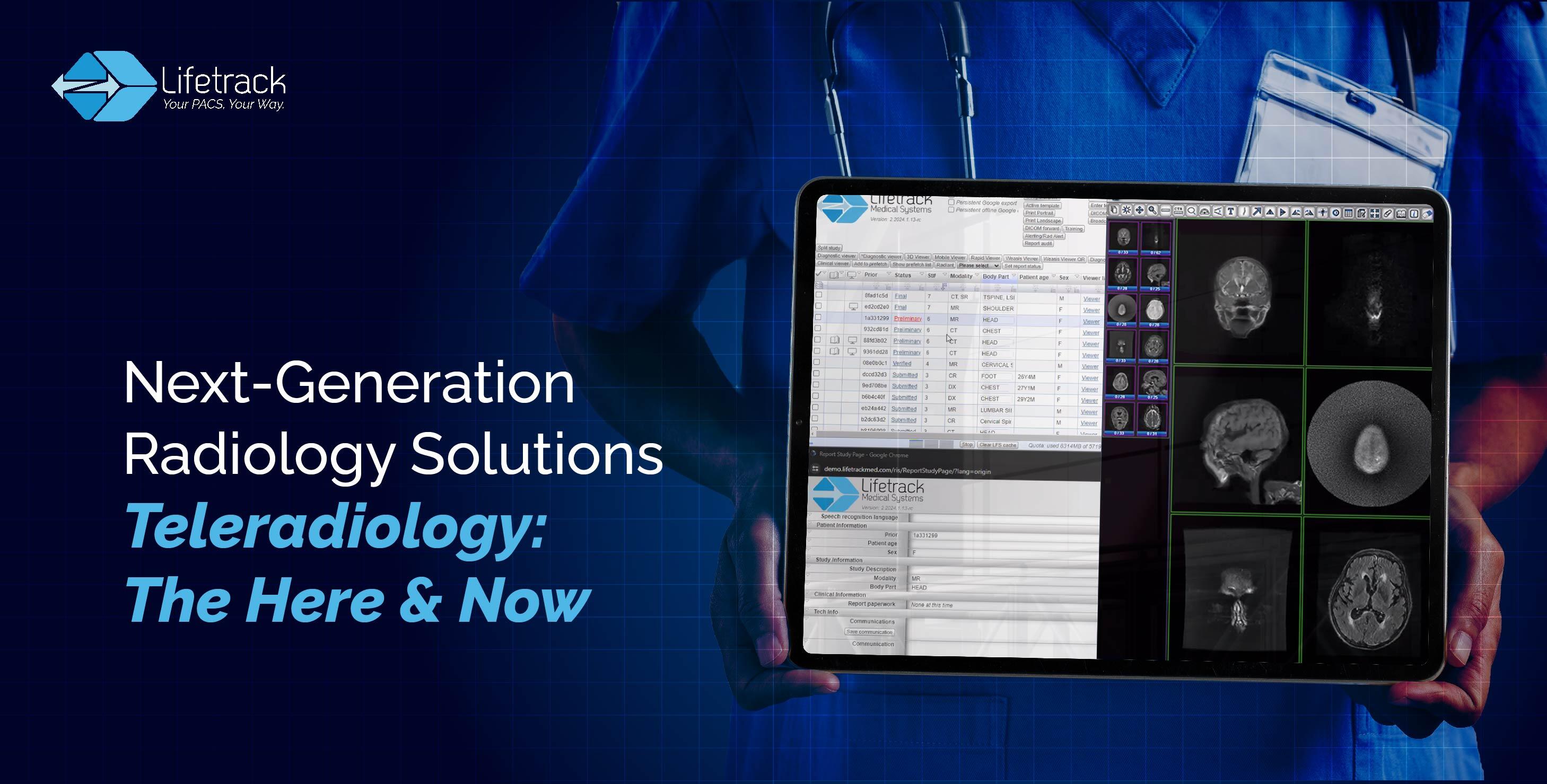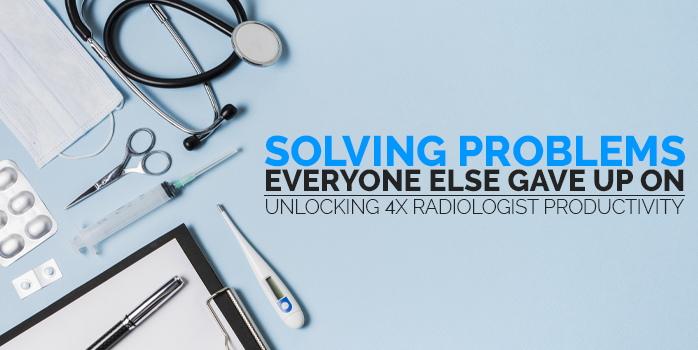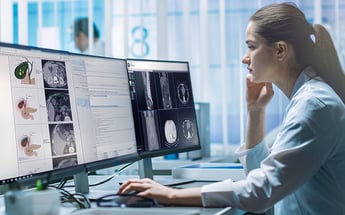
Teleradiology: The Here & Now
Modern healthcare has seen a remarkable advancement in radiology services, particularly in the form of teleradiology. Teleradiology plays a...

Understanding wRVUs: What They Are and How They're Used
RVU stands for Relative Value Unit, a system used in the USA to determine the value of a medical service in terms of time and effort. Medicare and other payers use RVUs to calculate the amount of money they will reimburse a provider for a medical service. In simple terms, RVUs are a way to measure the amount of work involved in performing a medical service.
RVUs are widely utilized to record and track the productivity of HCPs in addition to being used to determine payment for services rendered. They can be used to ensure providers are meeting their targets, track the overall productivity of a practice, and provide incentives for employees to exceed their goals. It is common for Radiology reading services groups to utilize RVU output to determine partnerships and compensation, making it an essential metric in the reading world.
The average radiologist RVU output per month is a complex topic. Many factors can affect the amount of RVUs radiologists generate, such as the number of patients seen, the type of imaging performed, and the location of the radiologists' practice. For example, a radiologist working in a busy hospital in a large city may generate more RVUs than a radiologist who primarily performs routine imaging. Overall, the amount of RVUs can vary greatly, and it's essential to consider all the relevant factors when determining the average RVU output for a radiologist.
Generally, a US radiologist will generate between 1,000 to 1,200 wRVUs per month. According to a survey conducted by The Reading Room (Collins, 2021), the median number of RVUs per radiologist nationwide is 10,020 per year[1]. This means that half of the radiologists generate more than 10,020 wRVUs per year, and half generate less.
Radiologists who read more complicated procedures, such as MRI or CT scans, tend to generate more RVUs than those who evaluate more straightforward procedures. Interventional radiologists, who perform minimally invasive procedures, also tend to generate more RVUs than diagnostic radiologists. In addition, radiologists who work in specialized fields, such as pediatric radiology or neuroradiology, may also generate more RVUs than general radiologists.
The average RVU for radiologists varies depending on the type of procedure performed, the procedure's complexity, and the radiologist's experience. However, radiologists who can provide efficient and accurate care and those who specialize in specific areas tend to generate more RVUs than general radiologists.

How Increased Workload and wRVU output can contribute to burnout
According to the American College of radiology, radiologists are more likely to experience burnout than most doctors.
Numerous studies have shown that increased workload is one of the leading causes of stress at work. With the introduction of PACS, radiologists’ workloads have significantly expanded over the past 15 years, leaving them with far more extensive data sets to evaluate and a general increase in the number of imaging studies examined. Between 2006 and 2020, the overall workload during on-call hours increased by 297%. This means that during this period, the amount of work that radiologists had to do during on-call hours increased by 297% compared to their workload in 2006. For example, if a radiologist's workload during on-call hours in 2006 were 10 hours, their workload in 2020 would have been 29.7 hours (10 hours x 297% = 29.7 hours)[2]. This increased workload can be a significant source of stress for radiologists and can contribute to burnout.
According to Bruls and Kwee's (2020)[3] research, the number of radiology staff working during on-call hours in hospitals has remained the same, even though the workload has increased dramatically. The result has been a rise in personal workload over the past 15 years. This results in radiologists experiencing higher rates of burnout thanks to a trend that seems like it will only increase.
The output of more RVUs to cater to increasing workloads can cause burnout in radiologists in several ways. Suppose a radiologist performing a high volume of imaging studies; they may experience burnout due to the stress of a fast-paced environment and lack of time for patient interaction. Additionally, a radiologist performing complex studies may experience higher stress levels leading to burnout.
Understanding Lifetracks' Model: How Is It Different from Other Models?
The use of non-resident pre-readers or radiology assistants is nothing new, having been around for over a decade. Cloud-accessible PACS and VPNs have provided global access to resources. Lifetrack has perfected and patented technology to fully utilize these resources and their output most efficiently and effectively.
Many users claim that Lifetrack solved a problem everyone else gave up on or that they found the Holy Grail in Radiology: structured reporting. The highly configurable system allows radiologists to utilize no-code structured reports regardless of region. Any user can change templates with permission, and they will appear in real time to all other users. A report template can be selected based on body parts and modality. This ensures that radiologists are always reporting in the same format. Add in a built-in voice dictation system to this highly flexible system, and you have their patented “Active Templates”. These templates feature a point-and-click design allowing quick, intuitive, and consistent reporting.
In most pre-reader and final reader models, the pre-reader creates a report of their findings and pushes it to the final reader. If the radiologist agrees with the findings completely, they can update the status to “final” and have their signature added to the report, requiring no further work. However, if the radiologist disagrees with any part of the finding, including grammar, they must create an entirely new dictation. The original report is discarded, and the pre-reader is none the wiser. This model is broken for two reasons: firstly, it creates more work for the radiologist, and there is no feedback loop to the pre-reader.
Lifetrack’s Active Templates feature addresses this issue by allowing the signing radiologist to edit single lines, even words, without the need to create a new dictation, saving considerable time. Furthermore, the changes are visible to the pre-readers, allowing them to learn from the signing radiologist and read more like them, ultimately
allowing the signing radiologists to read faster since the first radiologist is learning from them. Thus, a virtuous feedback loop is created.

The pre-reader Model at Lifetrack: How It’s Changing the Game for Radiologists and Building Efficiencies
The prereader model designed by Lifetrack has changed how radiologists read and has built significant efficiencies for those leveraging their model.
Radiologists using the Lifetrack model are averaging 4,614 wRVUs per month, with a high of 6,276 wRVUs per month. This puts the average of just over 4x of the radiologists not using this model. The highest output reader was able to output approximately 6x the average radiologist. Their only comment at the end of the month: “do you have any more clients who need reads? I feel like I have a lot more capacity.”
The use of pre-readers in conjunction with Active Templates has undoubtedly made radiologists more productive while significantly reducing burnout potential.
1Collins, J. M., MD. (2021, January 31). Radiologist $alary Update 2020: Show Me The Money! The Reading Room. https://thereadingroom.mrionline.com/2020/11/radiologist-alary-update-2020-show-me-the-money/
2Bruls, R., & Kwee’s, R. (2020, November 23). Workload for radiologists during on-call hours: dramatic increase in the past 15 years. pubmed.gov. https://pubmed.ncbi.nlm.nih.gov/33226490/
3Bruls, R., & Kwee’s, R. (2020, November 23). Workload for radiologists during on-call hours: dramatic increase in the past 15 years. pubmed.gov. https://pubmed.ncbi.nlm.nih.gov/33226490/

Teleradiology: The Here & Now
Modern healthcare has seen a remarkable advancement in radiology services, particularly in the form of teleradiology. Teleradiology plays a...

Overcoming the Challenges of Solo Teleradiology Practice: How RAaaS Transforms Your Workflow and Boosts ROI
Radiologists operating as solo practitioners or running...